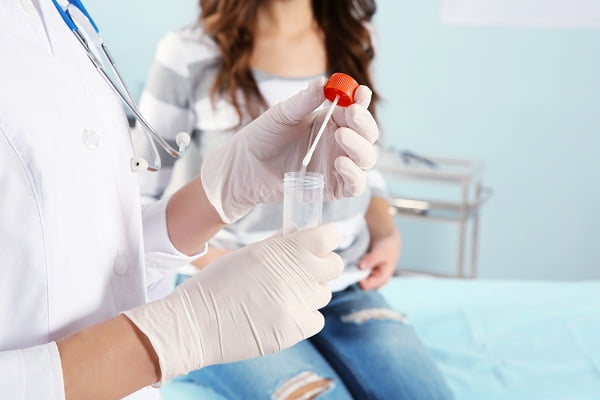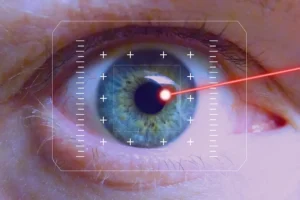Diagnosis of Chlamydia
- Updated on: Jun 27, 2024
- 4 min Read
- Published on Sep 27, 2019

Chlamydia infection often referred as Chlamydia, is a sexually transmitted disease caused by the bacterium Chlamydia Trachomatis. The bacterium Chlamydia Trachomatis occur only in humans. It is the most common sexually transmitted infection (STI) and can infect both men and women. This disease can spread during vaginal, oral or anal sex. The person doesn’t need to experience penetration in order to get it.
You can read about Chlamydia causes here.
Read more about the basics of Chlamydia.
When to go for Chlamydia diagnosis?
A person should consider consulting a doctor for diagnosis in the following cases:
- if any of the symptoms are shown by you or your partner. Read about Chlamydia symptoms here.
- If you had unprotected sex with a new partner
- If you have a prior history of Sexually Transmitted Infections (STIs)
- If your partner has a prior history of STIs
- If you are pregnant or planning a baby
Screening and diagnosis of Chlamydia infection are relatively simple as bacterial test are done for its presence or absence. The tests for Chlamydia require isolation of genital secretion sample or urine sample.

Diagnosis is done by either culture (growing microbes in laboratory conditions) or by developing antigens against microbe’s DNA. These tests are done by genitourinary medicine (GUM) clinics and sexual health clinics.
Tests for Chlamydia infection
- A Urine test in which urine of a person is analyzed in the laboratory to indicate the presence or absence of bacteria.
- A swab test in which your doctor takes a swab of discharge from the genital area for culture (growing) or for antigen testing against Chlamydia. Swab may be taken from rectum in case of rectal infection.
Even after a person has been treated for chlamydia, it is possible to get the infection again. Repeated infections are common in case of Chlamydia, so it’s necessary to get tested after every three months. Read about treating Chlamydia.
In women, the test involves cervix examination by a doctor and acquiring a vaginal sample using a swab. For men, a doctor may insert a slim swab in the tip of the penis to obtain a sample from the urethra. However, this method was quite painful. Nowadays, urine tests are done to easily acquire the sample from the male penis. For this test, males are refrained from urinating for at least 2 hours before the test.
Following are the methods used for the diagnosis of chlamydial infection:
- Direct cytological examination
- Cell culturing (Antigen Detection testing and NAAT testing)
These diagnostic methods are described in detail as follows.
Direct Cytological examination
In women, chlamydia infection generally develops in the lower genital tract. It causes a mucosal vaginal discharge which generally has an odour. But sometimes infected women do not show any clear symptom.
A severe infection leads to Pelvic Inflammatory disease (PID). The cervix tends to bleed easily in extreme cases. The direct cytological examination involves check up for any such discharge from the vagina. Chlamydial infection generally cannot be distinguished from any other discharge. The mucosal discharge is scraped with a polyester swab or spatula.
In men, Chlamydia infects lower genital tract that causes urethritis (secondary infection). The primary symptom of Chlamydia infection is clear to cloudy discharge from the tip of the penis which is best observed in the morning. In the direct cytological examination, the penis is milked to extract urethral sample. This is done by applying pressure from the base of the penis to glans penis (front portion). This discharge is examined by clinical microscopy and amine test. In amine test, the discharge releases a significant odor upon addition of potassium hydroxide.
In another cytological test, urethral discharge is drawn out by compressing urethra during the pelvic examination. This is done to diagnose any signs of PID in women. Analysis of urine generally shows more than five white blood cells per high-powered field. Urethral cultures, if not the extreme case, generally show a negative result.
Apart from taking vaginal/penal discharge samples, doctors do look for any swelling in testicles or any abrasions in the vagina in case of men and women respectively.
Cell culturing
It is a diagnostic technique that involves culture (growing) of cells and is more preferred compared to direct cytological examination. However, direct examination techniques are still in use.
Chlamydial samples (urine or mucus) are taken from the cervix, urethra, eye, rectum or throat. Then this fluid is added to certain cells (outside body in laboratory conditions) used to grow chlamydia. After 5 to 7 days, these cells are checked for any signs of infection. Both positive and negative results are possible.
Apart from this, two tests are commonly done by culturing samples from vagina or penis. These are:
Antigen Detection testing
This test is done using commercially available Chlamydia test cards. They are rapid and quantitatively detect the infection antibody in fluid samples collected from males and females.
The test utilizes antibody specific for Chlamydia to selectively detect Chlamydia antigen. Chlamydia-specific antibodies are coated to a particle. The extracted antigen reacts with the antibody and generates a colored line. The presence of colored line means a positive result while the absence of colored line means a negative test.
Another colored line also appears as a control line which indicates whether the proper volume of sample is added or not. The test is easy and gives a result within 10 minutes.
NAAT testing
This is also called as Nucleic Acid Amplification Testing. These tests depend on the genetic material of the Chlamydia bacteria. The nucleic acid (genetic material) of bacteria present is isolated after culturing the bodily fluids. After extraction of the nucleic acid, it is amplified and tested for the presence of Chlamydial genome.
What to do before diagnosis?
As mentioned above, Chlamydia test is either done with a urine sample or swab sample from the area of the body that is affected. Following are the points that help to prepare the person for the diagnosis:
- Don’t urinate for at least 2 hours before urine sample collection
- Don’t use any vaginal creams or medicine 24 hours before test












